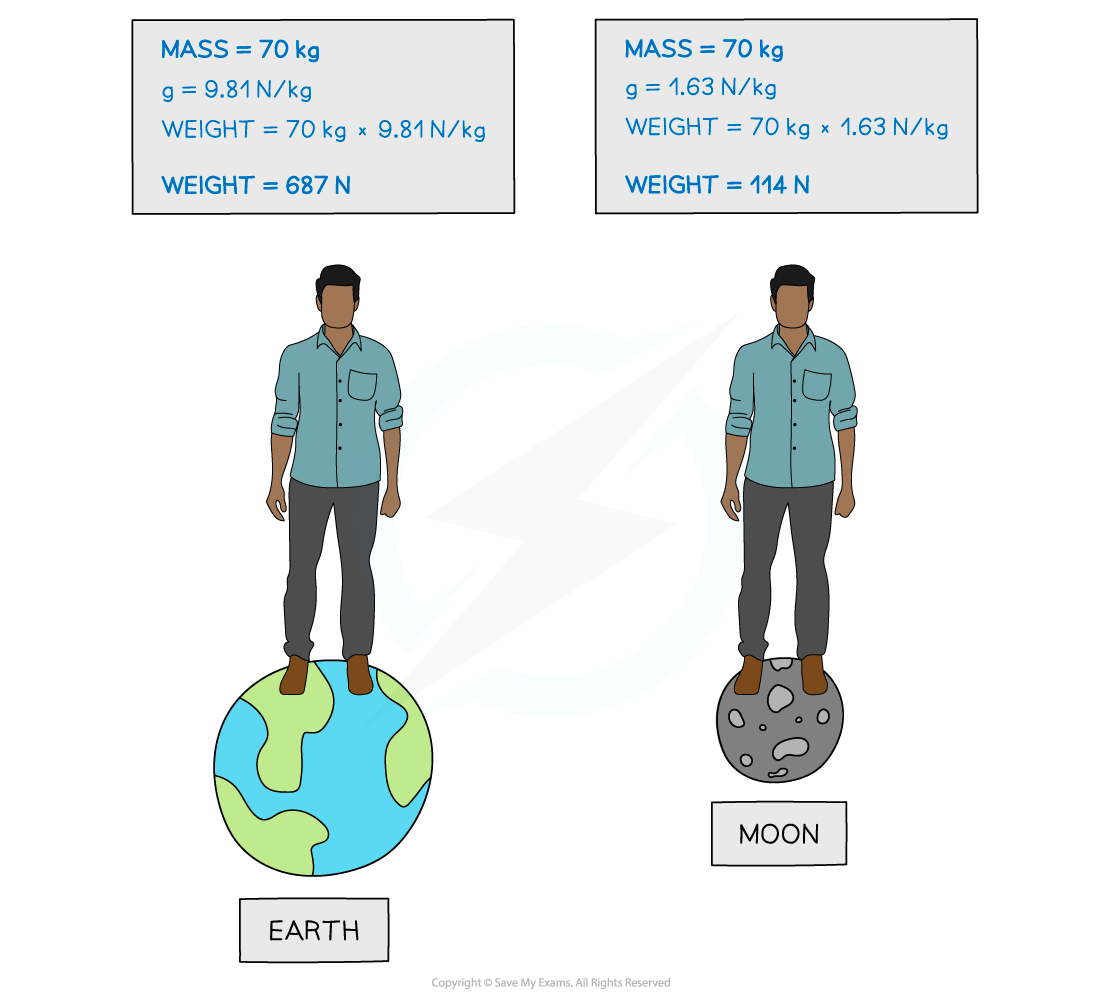Calculating Weight across the Universe (SQA National 5 Physics): Revision Note
Exam code: X857 75
Did this video help you?
Calculating weight across the universe
Weight, mass and gravitational field strength are related using the equation:
Where:
= weight, measured in newtons (N)
= mass, measured in kilograms (kg)
= gravitational field strength, measured in newtons per kilogram (N kg-1)
Different planets have different gravitational field strengths
This depends on the mass of the planet
More massive planets have stronger gravitational fields
The gravitational field strengths at the surface of different objects in the solar system are shown in the table
Gravitational field strengths in the solar system
Object | Gravitational field strength on the surface (N kg-1) |
|---|---|
Earth | 9.8 |
Jupiter | 23 |
Mars | 3.7 |
Mercury | 3.7 |
Moon | 1.6 |
Neptune | 11 |
Saturn | 9.0 |
Sun | 270 |
Uranus | 8.7 |
Venus | 8.9 |
Examiner Tips and Tricks
This table will be provided in the Data Sheet for your exam, so you will be expected to identify when to use these values, rather than being given them in the question.
Mass vs. weight
An object’s mass always remains the same, regardless of its location in the universe
The weight force acting on the object will vary depending on the gravitational field strength at the location in the universe
For example, the gravitational field strength on the Moon is 1.63 N kg-1, meaning an object’s weight will be about 6 times less than on Earth
Comparison of weight on Earth and on the Moon

Worked Example
A student estimates they would have a weight of 185 N on Mars.
Calculate the weight of the student on Earth.
Answer:
Step 1: List the known quantities
Weight on Mars, WM = 185 N
Gravitational field strength on Mars, gM = 3.7 N kg-1
Gravitational field strength on Earth, gE = 9.8 N kg-1
Step 2: Write out the equation relating mass and weight and rearrange for mass
Divide both sides by g:
Step 3: Calculate the student’s mass
The student’s mass is the same at all locations in the universe
Step 4: Calculate the student’s weight on Earth

Unlock more, it's free!
Did this page help you?